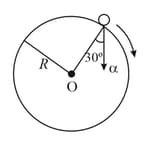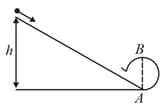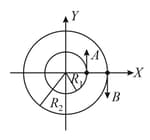Embibe Experts Solutions for Chapter: Circular Motion, Exercise 3: Exercise-3
Embibe Experts Physics Solutions for Exercise - Embibe Experts Solutions for Chapter: Circular Motion, Exercise 3: Exercise-3
Attempt the practice questions on Chapter 7: Circular Motion, Exercise 3: Exercise-3 with hints and solutions to strengthen your understanding. Alpha Question Bank for Medical: Physics solutions are prepared by Experienced Embibe Experts.
Questions from Embibe Experts Solutions for Chapter: Circular Motion, Exercise 3: Exercise-3 with Hints & Solutions
A car of mass negotiates a banked curve of radius on a frictionless road. If the banking angle is , the speed of the car is:
A car of mass is moving on a level circular track of radius . If represents the static friction between the road and tyres of the car, the maximum speed of the car in circular motion is given by:
In the given figure, represents the total acceleration of a particle moving in the clockwise direction in a circle of radius at a given instant of time. The speed of the particle is

A body initially at rest and sliding along a frictionless track from a height (as shown in the figure) Just completes a vertical circle of diameter . The height is equal to

A point moves in counter-clockwise direction on a circular path as shown in the figure. The movement of '' is such that it sweeps out a length , where is in metres and is in seconds. The radius of the path is . The acceleration of 'P' when is nearly-

A particle is moving with a uniform speed in a circular orbit of radius in a central force inversely proportional to the power of If the period of rotation of the particle is then :
Two particles are moving on two concentric circles of radii and with equal angular speed . At , their positions and direction of motion are shown in the figure.

The relative velocity at is
The position vector of a particle as a function of time is given by where is in meters, is seconds and and denote unit vectors along - and directions, respectively. Which one of the following statements is wrong for the motion of particle
